When you’re aiming at achieving optimal growth and yield, it’s important that you take good care of your plants and one overlooked element in this is the use of Epsom salts. Epsom salts are chemically called magnesium sulfate, they provide plants with magnesium and sulfur which are two vital nutrients necessary for their proper development. Magnesium plays a significant part in photosynthesis as chlorophyll’s main component while sulphur is essential for protein synthesis plus enzyme activity. This blog aims to uncover the multiple advantages that come with the use of Epsom salts in gardening, from improving nutrient uptake to correcting magnesium deficiencies among others leading to healthier more vigorous plants. We aim at giving quality advice on how to integrate Epsom salt applications into your plant care program so as to boost garden health and output by making them look into various uses it has.
Why Is Epsom Salt Good for Plants?
There are many benefits of Epsom salts to plants. Magneisum and sulfer are the most important ones because they help in several physiological functions. Chlorophyl is a very important molecule that goes through photosynthesis processes which make it possible for plants to convert sunlight into an energy form efficiently. Sulfer is another very crucial element for synthesis of amino acids like enzymes, proteins necessary for growth of plants. Regularly adding Epsom salts onto soil may increase nutrient absorption, correct nutritional deficiencies, and increase overall vigor of crops leading to healthier leaves, stronger branches or stems as well as more harvests.
Epsom Salt: What Is It And How Does It Work?
The natural mineral compound composed of magnesium, sulfur and oxygen known as Epsom salt or magnesium sulfate (MgSO₄·7H₂O). Once dissolved in water, Epsom salt separates into ions of magnesium (Mg²⁺) and sulfate (SO₄²⁻) making these essential nutrients readily available for plant uptake. The role played by magnesium ion in the chlorophyll molecule enhances its ability to capture light energy during photosynthesis. Technically speaking magnesium oxidizes at around 40-60 Ppm if one wants to grow most types of plants on soil. Sulfur also comes as sulphate which is used in synthesizing amino acids such as cysteine and methionine that act as building blocks for proteins and enzymes creation in plants’ bodies. This substance should be kept at around 10-30 ppm in soil so that there can be good expression between levels.
Why Does Epsom Salt Improve Plant Growth?
Improvement of plant growth by epsom salt happens through various mechanisms but mainly it focuses on magnesium provision and sulfur nutrients required for physiological purposes by plants.Magnesium plays a major role on photosynthesis where it captures energy from light due to its location at the center of chlorophyll molecule. The optimum magnesium level in soil is normally between 25 and 50 parts per million (ppm), ensuring effective energy conversion and metabolic functions. Sulphur on the other hand, is a component of amino acids including cysteine and methionine; hence its presence is necessary for protein synthesis such as enzymes responsible for plant growth. These biochemical pathways can be supported by maintaining sulfur levels in soil within a range of 10 to 30 ppm. By doing this Epsom salts can address nutrient imbalances particularly in soils that are low in magnesium thus promoting good plant development.
What Nutrients Are Important To Plants In Epsom Salt?
The chemical name for Epsom salt is Magnesium sulfate (MgSO₄) and it provides two essential elements necessary for plants: Mg plus Sulfur ions.Magnesium plays a significant role in photosynthesis concerning forming the backbone of chlorophyll molecule. To carry out efficient energy conversion and metabolic functions, the optimum magnesium concentration in soil should lie between approximately 25-50 ppm.Besides, sulfur also forms sulphate that aids in synthesizing amino acids like cysteine and methionine which are precursors to proteins and enzymes within plants. Normally adequate amount of sulfur in soil should range from 10 to 30 ppm.By meeting these parameters Epsom salt prevents imbalance of nutrients thereby encouraging healthier and more yielding crops.
How to Use Epsom Salt in the Garden?
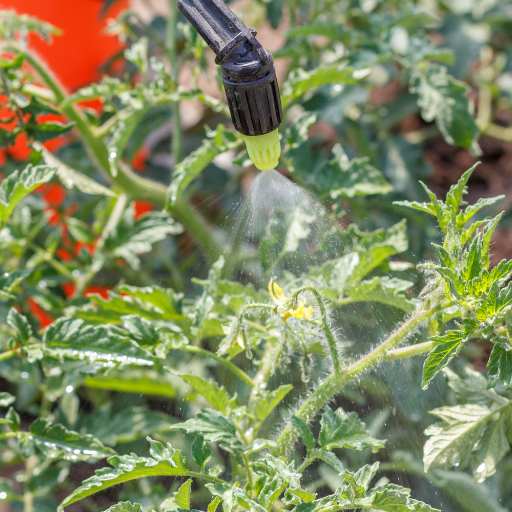
To apply Epsom salt in the garden, begin by identifying plants’ exact requirements. For general use purposes, mix a tablespoon of Epsom salt and water one gallon of this solution on your plants once a month. When using more focus approaches, sprinkle a tablespoon of Epsom salt directly around the base of your plants for every foot of plant height and water thoroughly to improve soil absorption. In order to avoid leaf burn, mix one tablespoonful of Epsom salt with one gallon of water and spray it onto the leaves in early morning or late evening periods. Over- application should be avoided as excessive magnesium or sulfur can disrupt nutrient balance in soil thereby having harmful effects on the well-being of crops. Watch constantly on your soil’s status as well as plant conditions so that you can accordingly modify the frequency and amounting involved when using Epsom salts.
When Should You Apply Epsom Salt?
Epsom salt is applied at different stages of growth depending on specific needs identified. Application at an early stage helps to develop strong roots for healthy plants. For this phase, general watering solution with 1Tbs per gallon once monthly will do it. As they move into flowering/fruiting phase tomatoes need more magnesium sulphate than other crops because they are heavy feeders. Photosynthesis during these periods could be enhanced through foliar spraying twice weekly at 1 Tbs/gallon among other things that would improve yield rates. Do not apply during hottest part of day to prevent leaf scorching though.
For quick nutrient correction in signs of magnesium deficiency such as yellowing leaves between the veins (interveinal chlorosis), an immediate soil drench with two tablespoons per gallon drench is recommended. Always monitor plant and soil conditions to ensure that the frequency and concentration of applications are effectively meeting the plants’ needs without causing nutrient imbalances
How Much Epsom Salt Should You Use per Plant?
The amount of Epsom salt to use per plant varies depending on the type and stage of growth. Generally, for most garden plants, a tablespoon of Epsom salt should be used once a month for every foot of plant height in soil around the base of each plant. For tomatoes and peppers, use 1 tablespoon per gallon of water as a soil drench every two weeks. For roses put ½ cup of Epsom salt in the hole when planting and again when it first leafs out. Consistent observation of plant response as well as soil conditions will help fine-tune these amounts so as to ensure optimum growth and health.
Methods of Application: Soil vs Sprays
- Soil Application: This entails putting Epsom salt directly into the ground around plant bases. Magnesium availability is improved through application to soil while root absorption is encouraged. Most garden plants require one tablespoonful per foot in height monthly[3]. This applies in particular to crops such as tomatoes, peppers, and roses that need regular magnesium supplementation
- Foliar Sprays: In this method, Epsom salts are dissolved in water and then sprayed directly on the leaves. Through this method, nutrients can be absorbed very fast by the leaf surfaces especially when plants are at a critical growth stage like flowering or fruiting. A foliar spray solution is made by adding 1 teaspoon of salt into every gallon of water to be applied bi-weekly. The most critical part of spraying using the leaves is to ensure that it is done during the coolest parts of the day to avoid burning them.
Is Epsom Salt Beneficial for Houseplants?
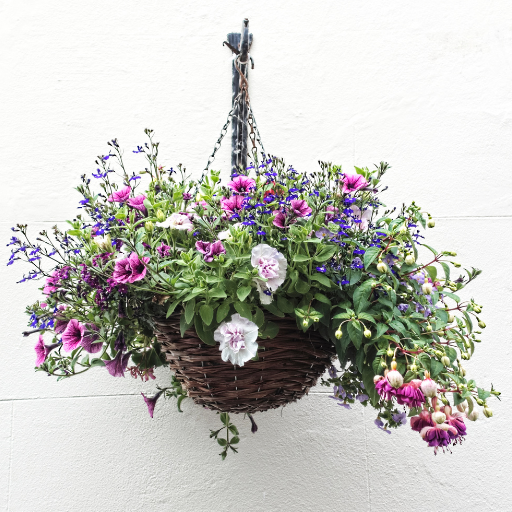
Definitely, Epsom salt is good for houseplants if it is used properly. The key element in it, that is to say magnesium sulphate, is vital for photosynthesis and therefore it helps chlorophyll formation leading to robust green vegetation. Nevertheless, little amounts of Epsom salt should be applied since one needs to see how their plants will react with this application. Normally, a tablespoon or two of Epsom salt dissolved in a gallon of water and applied once every month as soil wetting or foliar sprays is recommended. Overuse could cause imbalance in the nutrient content of the soil which necessitate testing soil conditions periodically to confirm the overall condition of the plant as recommended.
Effectively Adding Epsom Salt into House Plants
- The Appropriate Dosage: For most indoor plants 1-2 tablespoons of Epsom salts mixed thoroughly into a gallon of water are enough. This allows continuous irrigation within the month without over-stimulating the plants hence causing an imbalance.
- Soil Drench Method: Mix up some water so that you can have the right mount to which you can add your appropriate amount of Epsom salt. Do not leave your plants dry; instead, make sure that they receive this solution, like watering does, until all those soils are full but no excess water.
- Foliar Spray Method: If using one gallon of water dissolve one spoonful while misting your indoor plants leaves using spray bottle filled with such solution covering entire surface avoiding runoff only. Leaf scorch might occur when foliar sprays are made at hotter times thus apply them during cooler times.
- Monitor Plant Response: After applying Epsom salt, observe your leaf colors and growth changes. That way, you can easily prevent problems and make necessary adjustments if necessary.
- Periodical Soil Testing: Periodical tests on your soil must be done to maintain optimum soil health and thus prevent an imbalance in nutrient levels. You can access a wide range of soil testing kits that can help you gauge the need for additional magnesium or adjust your fertilization program.
Common Houseplants That Benefit from Epsom Salt
- Spider Plants: With chlorophyll production significant for photosynthesis, spider plants develop lush green leaves with applying Epsom salt at the rate of 1 tablespoon per gallon every month.
- African Violets: These plants benefit from the added magnesium, which enhances their blooming cycles and vibrant colors. A solution of ½ teaspoon of Epsom salt per quart of water should be applied bi-weekly.
- Ferns: Ferns are extremely sensitive to deficiencies in sulfur and magnesium; hence they show marked improvements in frond formation when treated with Epsom salt. Apply 1 tablespoon of Epsom salts dissolved into every gallon of water 6 weeks apart for maximum benefits.
How Often Should You Use Epsom Salt for Indoor Plants?
The frequency at which you apply Epsom salt on your indoor plants depends on each plant type. It is generally recommended that you include it as part of normal house care about once a month. As such, one can mix 1 tablespoonful per gallon water for most indoor plants.
Applying Epsom salt too often may cause nutritional imbalances and damage like leaf scorching. Therefore, assessing plant responses after treatment implementation is important as well as performing occasional soil tests to confirm whether nutrients are still kept within limits. For instance, some species like African Violets may require half –teaspoon twice a month indicating the necessity to change both frequency and dosage depending on particular plant needs.
Which Garden Plants Benefit Most from Epsom Salt?
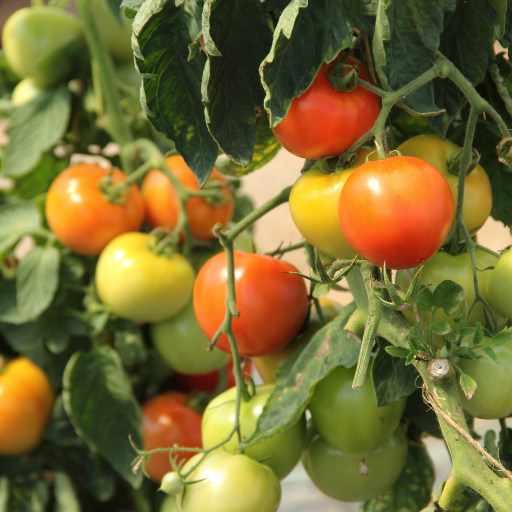
Among garden plants, tomatoes, roses and peppers mostly benefit from Epsom salt. Tomatoes do well with this substance because it contains magnesium which makes them produce more fruits and increase its general vitality. By applying a tablespoon of Epsom salt every two weeks on the leafy part of the plant for foot lengthened by one, high yields can be achieved. Similarly, roses also respond positively to Epsom salt as thicker canes and more flowers are formed. A common practice is to add a foot long, 1 tablespoon of Epsom salt during growing period. Lastly, peppers likewise get healthier foliage and increased harvests through applications of Epsom salt. Therefore for optimum growth in peppers bi-weekly apply a gallon water solution containing a table spoonful of Epsom salt.
Application of Bath Salts on Tomato Plants
What is referred to as Epsom Salt is chemically known as Magnesium Sulphate which tomato plants require for photosynthesis and essential enzymatic functions . The addition of Epsom salts addresses magnesium deficiency resulting in greener leaves enhanced nutrient uptake which improves overall plant health. For tomato plants starting with seedling applications involves adding I tablespoon per gallon water spraying this solution on seedlings after every two weeks During the growing season a generous sprinkling of 1 tablespoon full at the base for each foot height or mixing into soil prior to planting has been found effective in bringing about vigorous vegetative growth and heavy fruit set.. Regular monitoring on plant health conditions and soil nutrient status ensures that magnesium requirements are met without causing any imbalance to other important nutrients.
Rose Bushes: The Usefulness and Application of Epsom Salt
When applied to rose bushes there are several key benefits from using Epsom salts mainly due to its content that contains magnesium sulfate that enhances vigor in plant blooms.Magnesium being one component needed by chlorophyll aids photosynthesis leading to greener foliage while at the same time strengthening roots. Epsom salt also induces the production of essential enzymes which form important structural and functional components of floriculture. Therefore, incorporating Epsom salt into your rose care program is highly recommended for optimum results. A half cup of Espom salts under each matured rose bush at the first appearance of new growth in early spring is a good way to go. This should be followed by monthly feedings throughout the growing season. Besides, lushier blooms can be achieved by preparing a foliar spray that contains a gallon water with 1 tablespoonful of Epsom salt. In this way, magnesium supply is sustained to the roses thereby making them healthier and produce more flowers.
How Epsom Salt Helps to Prevent Blossom End Rot
Blossom end rot is a physiological disorder that affects mainly tomatoes, peppers and squash and causes a necrotic region at the blossom end of the fruit. This situation is usually attributed to lack of calcium but magnesium also plays a major role in its prevention. Blossom end rot (BER) which has been identified as one of the primary causes of tomato losses worldwide, can be prevented by using Epsom salt (MgSO4) which addresses the underlying problem of Mg deficiency in plants as it inhibits uptake efficiency of calcium ions that are vital for BER mitigation. Plants’ ability to transfer calcium to their fruits could be boosted through supplying magnesium either by adding it into soil or spraying on leaves using Epsom salt hence reducing likelihoods of BER. Application of Epsom salts on regular basis results in maintenance of balanced nutrient uptakes thereby encouraging growth and development hence guaranteeing healthier crops with reduced incidences of this disorder.
Can Epsom Salt Harm Your Plants?
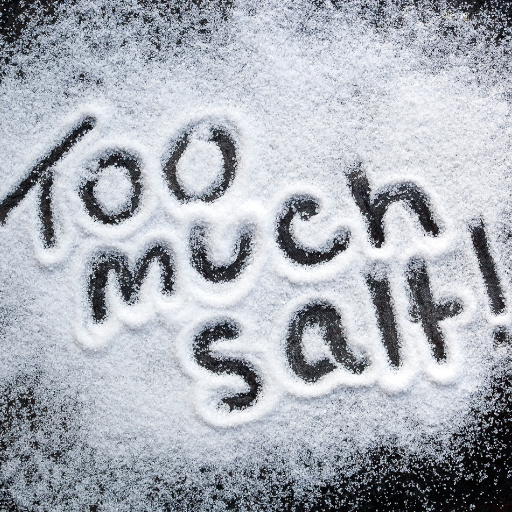
Overusing Epsom salt can harm plants although it does have many benefits. This will lead to magnesium toxicity due to over-application of Epsom salt resulting in stunted growth and yellowing leaves, which is associated with lack of nutrients in the soil. Additionally, high levels of magnesium can disrupt calcium and potassium absorption rates among other essential nutrients necessary for healthy plant development which may adversely affect their health and productivity. Therefore, it is important that one follows the recommended instructions and monitors his plants regularly so as not to cause an imbalance through overuse.
When You Overused Epsom Salt What Are the Signs?
Yellow leaves, stunting and leaf scorch are some signs you’ll notice when you use Epsom salt excessively on your crops. Yellow leaves start with old foliage and can be indicative of nutrient imbalances; too much magnesium interferes with calcium absorption as well as potassium in a plant’s body. Stunting results from incomplete nutrient profile access by plants needed for proper development. In addition, brown or dead patches around the edges of leaves indicate magnesium toxicity.
Regular observation of these symptoms should be done alongside following application rates as per recommendations made by experts. As a soil amendment, 1 tablespoonful tablespoonful tablespoonful per gallon of water every 4-6 weeks should be mixed with Epsom salts (Magnesium Sulfate). For foliar spray, use 2 tablespoonfuls tablespoons tablespoons tablespoons tablespoons per gallon of water applied on leaves after 2-4 weeks respectively (Epsom Salt Council). Routine soil testing and observations must be carried out to ensure nutrient levels within optimum range thus modifying fertilization programs where necessary to enhance good crop growth.
Do Any Plants Dislike Epsom Salt?
For certain plants, they might not respond favorably once one applies Epsom salt because most prefer a particular type or volume of manure to grow well while others do not tolerate them at all.
- Sage (Salvia officinalis): Sage is a perennial herb that flourishes in well-drained soils with little fertilization. Epsom salt has so much magnesium that it disrupts the fine nutrient balance within it, thus causing leaf yellowing and poor growth.
- Thyme (Thymus vulgaris): Like sage, thyme likes low-nutrient soils. However, excess magnesium in Epsom salt may interfere with calcium uptake and potassium absorption processes, leading to stunted growth and reduced essential oil production.
- Lavender (Lavandula spp.): Lavenders grow best in slightly alkaline, leached soils with poor fertility. If used here, however, it could create an unfavorable acid condition, which leads to root toxicity and, hence, reduces overall plant health and flower production.
- Orchids (Orchidaceae): Orchids are very sensitive to over-fertilizing or the application of too much manure salts. Epsom salt can increase the chances of root burn and hinder nutrient uptake, especially potassium, which is vital at this stage of their development. Hence, the flowering rate would be interfered with.
- Succulents (various species): Nutrients such as those contained in fertilizer are not essential for succulent plants since they are adapted to thrive under low nutrient conditions. High levels of magnesium can soften fleshy leaves in these plants, reducing their water-storing capacity.
Before Applying Epsom Salt How Can You Do Soil Test?
- Collect Soil Samples: Use a clean trowel to collect soil from various spots in your garden. Dig about 6 inches deep into each site and take small quantities from every location then blend them together using a clean pail.
- Dry and Prepare the Sample: Place the combined soil sample on a newspaper to air dry it out. Then crush any clumps by breaking up rocks or roots into fine pieces before removing any foreign bodies from the soil such as stones.
- Step 1: Use a soil testing kit: You can buy a packet of soil testing kits from a garden center or on the Internet.
- Step 2: Read the results; after waiting some time, compare the color in the solution with a chart provided in the kit. The result will give information about the soil pH and content of key nutrients like nitrogen, phosphorus, and potassium.
- Step 3: Interpreting Nutrient Needs; Based on the results, establish whether your soil lacks magnesium or sulphur before adding Epsom salt. If your soil already has enough magnesium, adding Epsom salts can cause nutrient imbalances.
Real-Life Success Stories With Epsom Salt
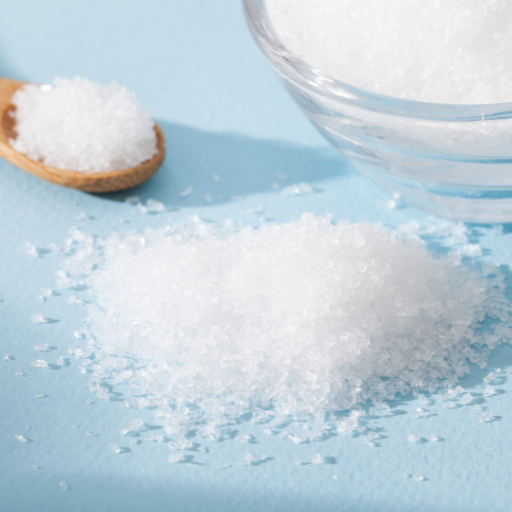
One remarkable success story is a gardener who rejuvenated his rose bushes with Epsom salts. They noticed that plants were suffering from magnesium deficiency, as indicated by yellow leaves with green veins on them. By dissolving Epsom salt in water and pouring it around every bush’s base, the gardener observed considerable progress within several weeks. The flowers became livelier again, while the foliage became vibrant.
Another one involves plants in a vegetable garden that appeared to be stunted. A soil test showed an initial lack of sulfur which is essential for protein synthesis and general plant health. As a result, the plants’ vigor and yields improved appreciably after supplementing their regular watering program with Epsom salt. The tomatoes, peppers, and beans bore more fruits while the plants became stronger.
A third memorable example is about nutrient-depleted lawns that troubled a landscaper all the time. Despite being fertilized regularly, there would be thinness and patchiness of grass stalks instead of lushness usually expected after feeding them over an extended period of time with chemicals like NPK (nitrogen, phosphorous, and potassium). After reviewing the literature and running a soil analysis, the recommended treatment was sprinkling Epsom salt solution across the lawn. The grass not only filled out but also turned dark green over some months indicating improved magnesium levels in particular and general health status.
Gardener Testimonials: Epsom Salt in Action
One grower reported amazing results achieved from using Epsom salts on her hydrangeas. These had blooms with no glitz or glow; so she decided to soak her flowers’ roots in dissolved Epsom salts mixed water. In short order, these flowers bloomed out more brightly colored petals, meaning they have been fed more magnesium, as evidenced by their big-sized blossoming buds saying bye-bye to undernourishment completely. Another testimonial comes from an avid fruit gardener who faced issues with their citrus trees. After adding Epsom salt to their fertilization regimen, the trees displayed improved leaf color and a significant increase in fruit production. Gardeners continuously share similar positive outcomes, further solidifying Epsom salt’s beneficial impact on plant health and vitality.
Case Studies: Epsom Salt Transformations in Vegetable Gardens
A detailed examination of the most visited sites discussing the merits of using Epsom salts for vegetable gardening shows that if used properly, it greatly improves growth and productivity. According to the Garden Myths website, one recommended approach is to mix one tablespoon of Epsom salt with a gallon of water and apply this solution once every month to avoid overusing it, which may hurt your plants. This can help counteract magnesium deficiencies that might be inhibiting the growth of vegetables.
In addition, the National Gardening Association advises that before applying this product, gardeners should carry out soil testing to determine specific magnesium needs required by their soil. The results from these tests will enable gardeners calculate how much application is appropriate usually ranging between 1-2 tablespoons of Epsom salt per plant so as not to have optimal conditions for absorption.
Moreover, Michigan State University Extension warns against regarding Epsom salt as a primary fertilizer even though it can be helpful when added as a supplement. They suggest including this into an overall fertilization program having balanced nutrients for supporting good health in general such as combining its applications together with compost or regular use of any balanced fertilizer (containing nitrogen, phosphorus and potassium) so that benefits are maximized while risks associated with nutrient imbalance are minimized.
The Do’s and Don’ts: Learning from Other Peoples Mistakes
Do: do a soil test
Before adding Epsom salt to your garden, always do a soil test to determine the present amount of magnesium in your soil. Sites like the National Gardening Association propose this as the most important initial stage; thus, you can learn about what your soil generally needs before any overuse that might cause imbalances.
Don’t: Avoid Excessive use of Epsom Salt
Avoid using too much Epsom salt frequently. According to Garden Myths, this would damage rather than assist plants. A good rule to follow is mixing one tablespoonful of Epsom salts with a gallon of water and applying it once every 30 days so as not to induce toxicity.
Do: Integrate Epsom Salt into a Comprehensive Fertilization Plan
Michigan State University Extension recommends that epsom salt be used as a supplement and not an alternative for a balanced fertilization regime. For a healthy plant environment, add Epsom Salt applications to a fertilization program that involves compost or balanced fertilizer containing nitrogen (N), phosphorous (P), and potassium(K).
Don’t: Rely Solely on Epsom Salt for Plant Nutrition
Depending only on the use of Epsom salt might not provide all the necessary nutrients for growth. Though magnesium is vital, it is not the only nutrient required for optimum growth. This will ensure that all essential nutrients are taken care of, hence ensuring healthy and productive vegetable gardens.
Frequently Asked Questions (FAQs)
Q: What is Epsom salt and why is it used for plants?
A: Epsom salt is a naturally occurring mineral compound of magnesium and sulfate. It is used for plants to help provide essential nutrients that can aid in their growth and overall health. Epsom salt can help plants grow bushier, produce more flowers, and even improve their overall nutrient absorption capabilities.
Q: How does Epsom salt work for plants?
A: Epsom salt works by providing magnesium and sulfate directly to the soil or plants. These nutrients are crucial for photosynthesis and help plants absorb other essential minerals like nitrogen and phosphorus more effectively. This can result in healthier, more vigorous growth for the plants.
Q: How can Epsom salt help with blossom end rot in tomatoes?
A: Blossom end rot in tomatoes is often caused by a calcium deficiency, but the presence of magnesium from Epsom salt can help improve calcium uptake in the plants. Spraying Epsom salt on the leaves or adding it to the soil can help prevent this common issue.
Q: Can Epsom salt be used for peppers and tomatoes?
A: Yes, Epsom salt can be particularly beneficial for peppers and tomatoes. Adding Epsom salt to these plants can enhance their growth and productivity, leading to healthier, sturdier plants with better yields.
Q: How much Epsom salt should be used for potted plants?
A: For potted plants, it is recommended to add 1 tablespoon of Epsom salt per gallon of water and apply this solution once a month. This helps ensure that the potted plants receive the right amount of magnesium and sulfate.
Q: Can adding too much Epsom salt to plants cause any issues?
A: Yes, adding too much Epsom salt to plants can cause leaf scorch and create an imbalance in the soil. It’s essential to follow recommended guidelines and avoid overapplication to prevent negative effects on plants.
Q: Is Epsom salt different from table salt?
A: Yes, Epsom salt is different from table salt. Epsom salt is a compound of magnesium and sulfate, whereas table salt is primarily composed of sodium chloride. Plants don’t like Epsom salt the same way they do not like high concentrations of table salt, as it can be harmful to their growth.
Q: Can Epsom salt be used as a foliar spray?
A: Yes, Epsom salt can be used as a foliar spray. Adding a tablespoon of Epsom salt to a gallon of water and spraying it directly onto the leaves can help with direct nutrient absorption, aiding plants when used correctly.






